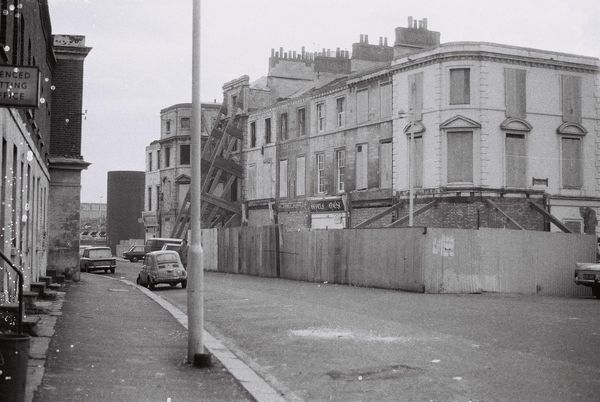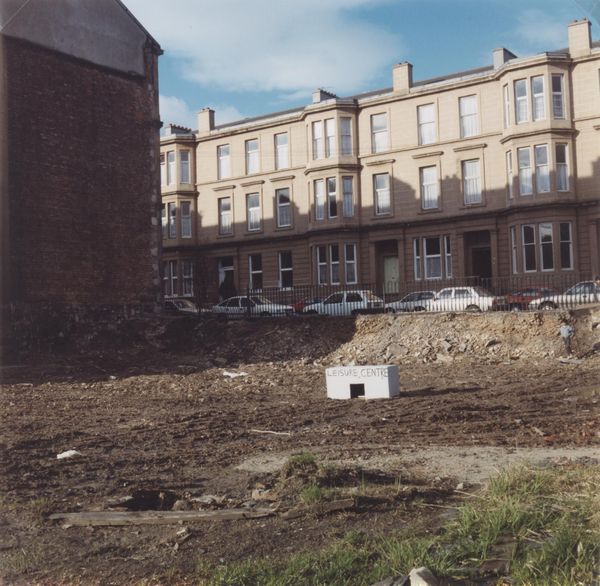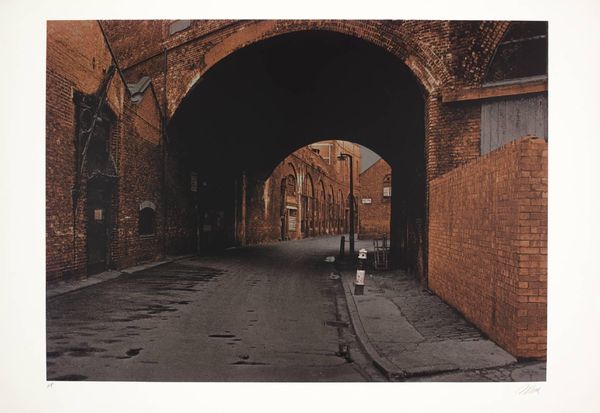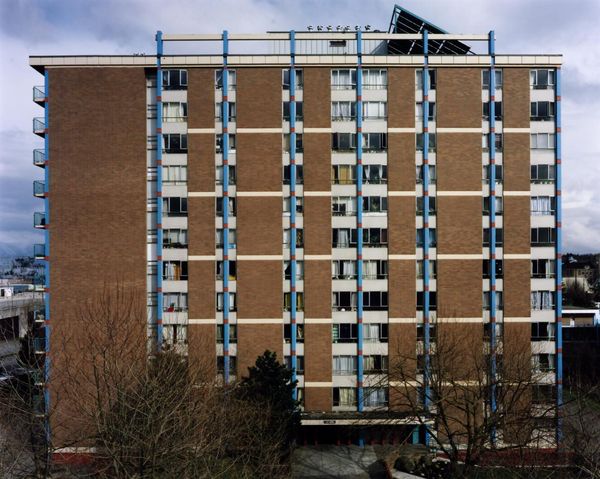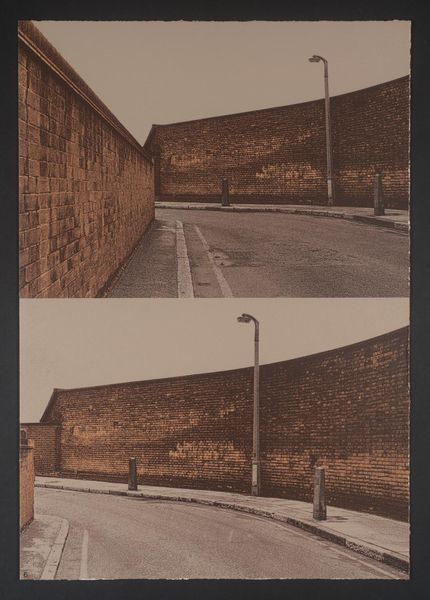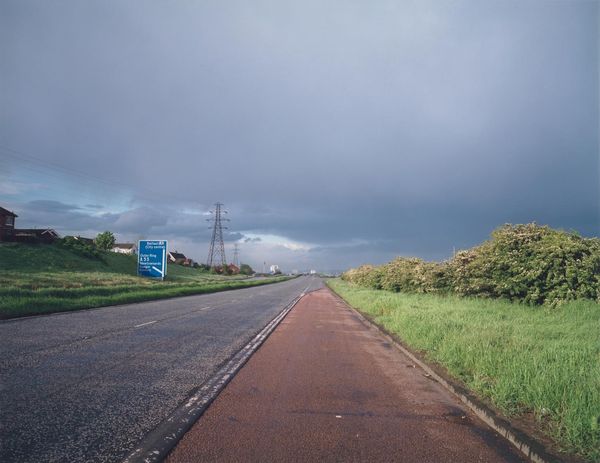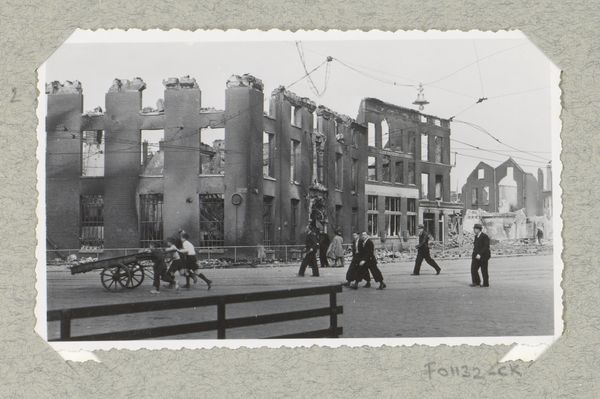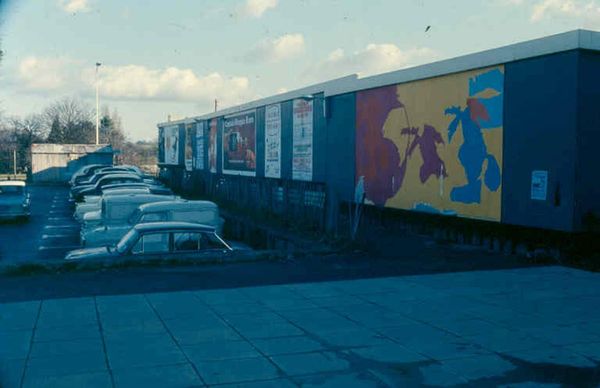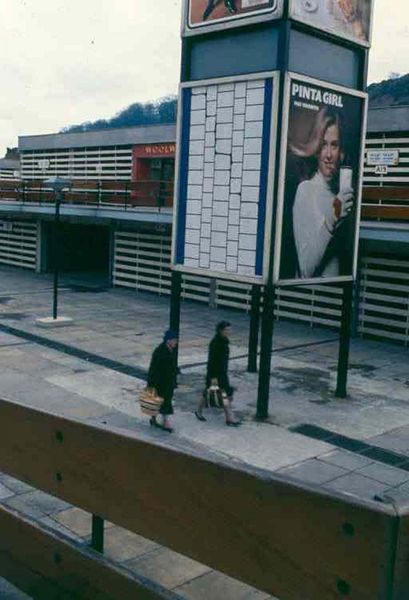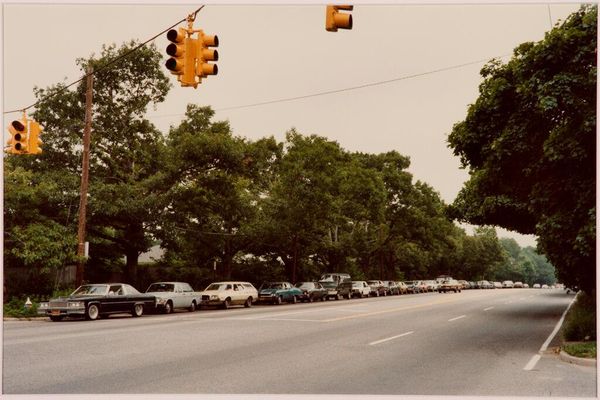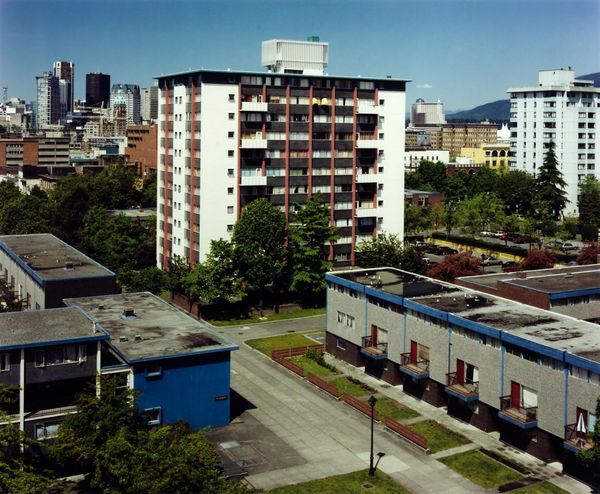
Dimensions: support: 680 x 880 mm
Copyright: © Paul Graham; courtesy Pace and Pace/MacGill Gallery, New York | CC-BY-NC-ND 4.0 DEED, Photo: Tate
Curator: Paul Graham’s photographic print, "Roundabout, Andersonstown, Belfast," captures a mundane scene, yet something about its stillness feels very loaded. What’s your initial take? Editor: There's a disquieting sense of emptiness. Despite the houses and cars, it feels devoid of life, almost like a stage set waiting for something to happen. Curator: Exactly. Graham's work often explores the quiet violence embedded in everyday landscapes. Andersonstown, during the Troubles, was a highly contested space, saturated with political meaning. Editor: Right, the roundabout itself—a liminal space—becomes a symbol. A place of perpetual circulation, perhaps mirroring the cycles of conflict and stalled progress. Curator: And consider the seemingly neutral palette. It avoids sensationalism, forcing us to confront the banality through which political realities are lived. Editor: The mundane, the symbolic, and the political, all interwoven in this single image. It’s a potent reminder of the weight ordinary places can carry. Curator: Indeed, Graham invites us to consider how history is etched into the very fabric of our surroundings.
Comments
tatebritain 8 months ago
⋮
http://www.tate.org.uk/art/artworks/graham-roundabout-andersonstown-belfast-p79342
Join the conversation
Join millions of artists and users on Artera today and experience the ultimate creative platform.
tatebritain 8 months ago
⋮
From 1984 to 1986, Paul Graham documented Northern Irish locations featured in news reports of the Troubles. During his first visit, Graham was stopped by a British military patrol suspicious of his camera. As they left, he took a shot with his camera hanging from his neck. The photograph became a ‘gateway’ for Graham’s Troubled Land series. He felt his other images of rioting, murals and destruction, ‘weakly echoed what I saw in the newspapers. This one image did not’. ‘There were people walking to shops and driving cars – simply going about their day, but then there was a soldier in full camouflage, running across the roundabout.’ For Graham, the image ‘reintegrated the conflict into the landscape ... it was a conflict photograph masquerading as a landscape photograph.’ Gallery label, November 2024
